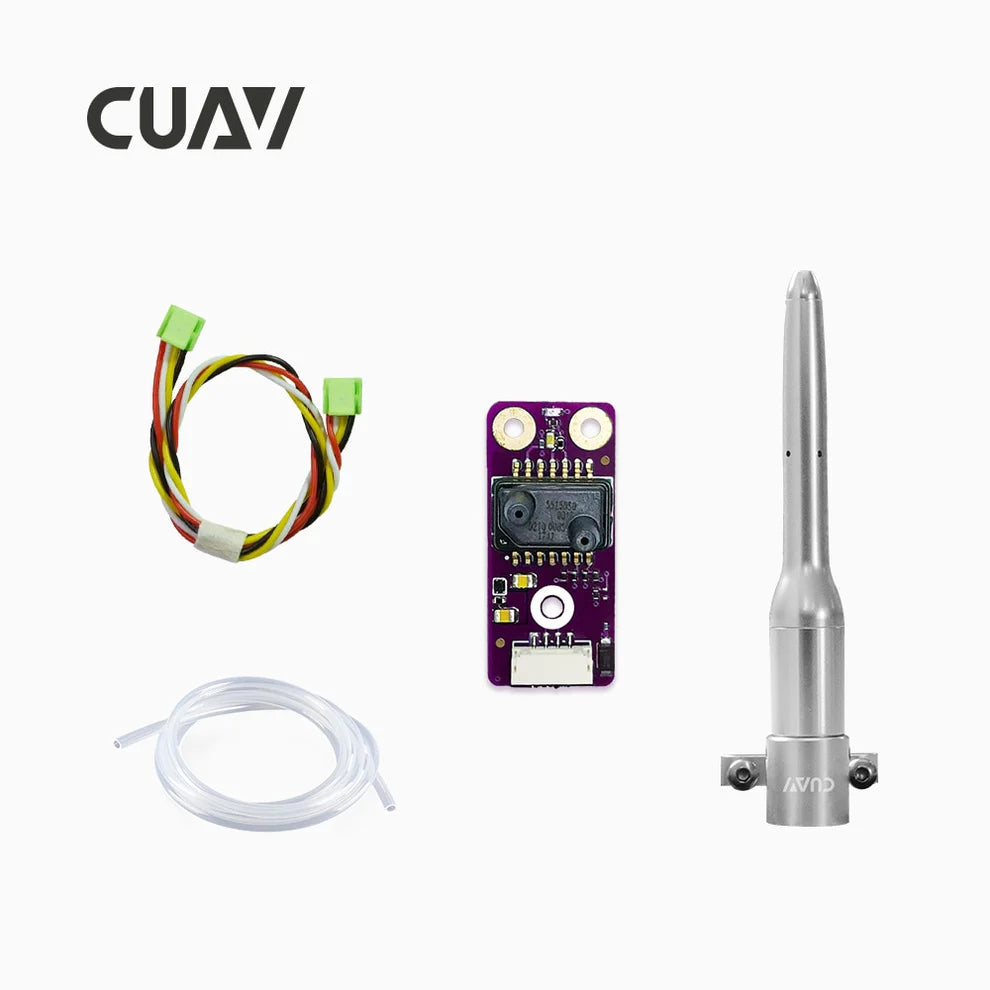
How to Choose Air Speed Sensors in 2024
Writing an in-depth article about selecting air speed sensors requires an exploration of various technical and practical aspects to ensure a comprehensive understanding. This guide aims to cover the essentials, including the meaning of air speed sensors, their working principle, critical parameters to consider, how to choose the right sensor, applications, and frequently asked questions (FAQs).
Buy Air Speed Sensor: https://rcdrone.top/collections/air-speed-sensor

Understanding Air Speed Sensors
Meaning and Importance: Air speed sensors, also known as pitot-static sensors or airspeed indicators, measure the speed of an aircraft or any object in the air relative to the surrounding air. This measurement is crucial for the safe operation of aircraft, as it helps pilots maintain control over their vehicles by providing vital data for navigation, takeoff, landing, and preventing stalls.
Operational Principle: The basic principle behind air speed sensors involves measuring the dynamic pressure of the air flowing into the pitot tube, a component of the sensor. This pressure is then compared to the static pressure of the air, obtained through static ports. The difference in these pressures, known as the dynamic pressure, is used to calculate the airspeed.
Key Parameters and Selection Criteria
When selecting an air speed sensor, consider the following parameters and criteria:
- Accuracy and Resolution: Choose sensors with high accuracy and resolution to ensure reliable speed measurements, especially critical in applications requiring precise navigation and control.
- Measurement Range: Ensure the sensor's measurement range matches the expected airspeeds of your application to avoid out-of-range errors.
- Durability and Environmental Resistance: The sensor should withstand the environmental conditions it will be exposed to, including temperature extremes, humidity, and vibrations.
- Compatibility: Check the sensor's compatibility with your system or aircraft, including interface requirements and mounting options.
- Ease of Installation and Maintenance: Prefer sensors that are easy to install and require minimal maintenance, especially in hard-to-access locations.
Application Scenarios
Air speed sensors find applications in a broad range of scenarios, from hobbyist remote-controlled models to commercial drones, sports aviation, and commercial airliners. They are essential for:
- Recreational and Hobbyist Projects: Including RC planes, drones, and other model aircraft.
- Commercial Drones: For delivery, aerial photography, and surveillance, where precise speed control enhances stability and performance.
- Manned Aviation: In both general aviation and commercial airliners, airspeed is a fundamental parameter for safe flight operations.
Frequently Asked Questions (FAQs)
- How do I calibrate an air speed sensor? Calibration procedures vary by sensor model and application but typically involve comparing sensor readings with a known airspeed or using calibration equipment.
- Can I use a single air speed sensor for different aircraft? While possible, it's essential to ensure the sensor's range and specifications match the requirements of each aircraft.
- How do I interpret air speed sensor data? Airspeed data should be integrated into your flight control system or interpreted according to the operational guidelines for your specific aircraft or project.
Conclusion
Selecting the right air speed sensor is a critical decision that impacts the safety and performance of any air-bound project or aircraft. By understanding the principles, parameters, and application scenarios, you can make an informed choice that matches your specific needs. Always consider the balance between technical specifications and practical considerations such as compatibility, installation, and maintenance when choosing a sensor. With the right air speed sensor, you can enhance the safety, efficiency, and reliability of your aerial operations.